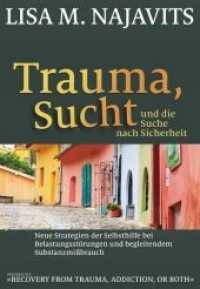- ホーム
- > 洋書
- > ドイツ書
- > Mathematics, Sciences & Technology
- > Earth Science
Full Description
These activities do not assess the effects and impacts of their cumulative pressures on the natural environment: coastal development, tourism, terrestrial pollution, maritime transport, dredging and piling, extraction of marine aggregates and development or planned development of marine wind farms or tidal turbines.








